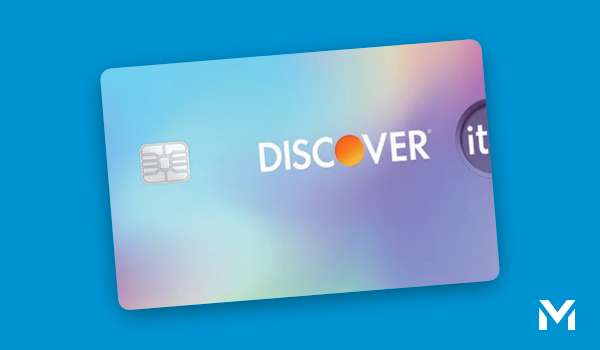
How to Use the Card Strategically
Getting approved for the Discover it Student Cash Back card is just the beginning. To get the full value, you need to use it with purpose. Here’s how:
1. Activate Bonus Categories Promptly: Each quarter brings a new 5 percent cash back category. Past examples have included:
- Grocery stores; Restaurants; Digital wallets (like Apple Pay or Google Pay); Amazon.com; Gas stations.
You must manually activate these bonuses—Discover sends reminders, but it’s up to you to opt in. Set a quarterly reminder so you never miss out.
2. Align Your Spending to the Calendar: Review the upcoming bonus categories and plan larger purchases accordingly. For example:
- If restaurants are the 5 percent category, consider dining out more that quarter.
- If Amazon or PayPal is eligible, delay certain tech or book purchases until the bonus period.
3. Combine with Student Discounts: Many students already benefit from platforms like UNiDAYS or Student Beans. Stack those discounts with your 5 percent cash back to save even more.
4. Use Cash Back for Smart Purchases: Rather than redeeming rewards impulsively, consider using them to offset textbook costs, pay down your balance, or even set up a small emergency fund.
5. Stay Below 30 Percent Credit Utilization: Using too much of your available credit can harm your score. Keep your balance below 30 percent of your limit to protect your credit profile.
Real-Life Student Scenarios
- Maria, a sophomore, uses the card to buy groceries during the 5 percent quarter and redeems rewards for Uber Eats credits when money is tight.
- James, a freshman with no credit history, applied with a part-time job and now monitors his score monthly using Discover’s built-in credit tracking.
- Nina, a senior, earns her Good Grade Reward yearly and uses cash back from Amazon purchases to cover her campus printing expenses.
These examples show how students use the card not just for rewards, but as a tool for budgeting and stability.
FAQ: What Most Students Don’t Ask (But Should)

1. Will applying hurt my credit?
Yes, temporarily. A hard inquiry is made, which may lower your score by a few points, but it typically recovers in a few months.
2. How much credit will I get?
Initial credit limits vary, often starting between $500 and $2,000 depending on your credit profile, income, and other factors.
3. What happens after graduation?
The card doesn’t close or change automatically. You can keep it, and it may be upgraded later based on usage and credit history.
4. Is there a late payment fee?
Yes, but Discover waives your first late fee as a courtesy. After that, it may be up to $41.
5. Can international students apply?
Some can—if they have a Social Security Number and U.S. address. However, approval is more likely with a credit file or co-signer.
6. Is balance transfer available?
Yes, but this card isn’t ideal for balance transfers since student versions don’t always come with 0 percent intro APRs. Check terms before using this feature.
7. Can I add an authorized user?
Yes. A parent or roommate can be added, and their purchases will earn cash back on your account. You’re responsible for the charges.
8. Do Discover rewards expire?
No. Rewards never expire, and there’s no penalty for holding them over time.
9. How do I check my FICO score?
Discover includes free FICO score monitoring in your account dashboard—updated monthly.
10. Can I upgrade this card later?
Yes, Discover may offer product changes to non-student versions once you’ve built enough history, often within 12–18 months.
Tips and Hacks to Maximize Your Rewards
1. Use AutoPay with a Calendar Buffer: Set up automatic payments to avoid late fees, but always schedule it 2–3 days before the due date to avoid timing errors due to weekends or bank delays.
2. Time Large Purchases With Cashback Match in Mind: Since all first-year earnings are matched, try to frontload spending in the first 12 months to maximize the bonus.
3. Use Digital Wallet Bonuses: If digital wallets are part of the 5 percent category, link the card to Apple Pay or Google Pay for additional convenience and savings.
4. Use Discover Deals and Partner Offers: Occasionally, Discover runs additional discounts through its shopping portal. Combine these with category bonuses for multiplied savings.
5. Refer a Friend: Discover pays cash when you refer friends and they’re approved. It’s often around $50 per referral, which adds up quickly in college networks.
Alternative and Complementary Credit Cards
The Discover it Student Cash Back card is strong, but it has limitations. If you want to round out your financial setup, consider:
- Capital One SavorOne Student: Offers unlimited 3 percent cash back on dining, streaming services, and grocery stores.
- Chase Freedom Rise: Geared toward young adults with thin or no credit history and offers a $25 bonus after first purchase.
- Deserve EDU Mastercard: No Social Security Number required for international students, includes Amazon Prime Student reimbursement.
These cards work well as either alternatives or secondary cards to complement the Discover it Student’s rotating categories.
Final Verdict: A Top-Tier Student Card
For students seeking a straightforward rewards card with growth potential, the Discover it Student Cash Back card hits the mark. It helps build credit, provides meaningful rewards, and includes perks tailored to student life—without locking you into fees or long-term obligations.
The first-year Cashback Match is where this card shines: doubling your rewards is equivalent to earning 10 percent on rotating categories and 2 percent everywhere else for one year. That’s a rate few non-student cards match.
Students who stay organized and activate categories consistently will see strong returns—and possibly build habits that serve them well long after graduation.
If you’re looking for a credit-building companion that earns as it educates, this card is one of the best in class.



 The Destiny Mastercard <p class='sec-title' style='line-height: normal; font-weight: normal;font-size: 16px !important; text-align: left;margin-top: 8px;margin-bottom: 0px !important;'> Rebuild, Refresh, and Rise — A Simple Way to Take Back Your Financial Confidence </p>
The Destiny Mastercard <p class='sec-title' style='line-height: normal; font-weight: normal;font-size: 16px !important; text-align: left;margin-top: 8px;margin-bottom: 0px !important;'> Rebuild, Refresh, and Rise — A Simple Way to Take Back Your Financial Confidence </p>  In-Depth Review: The Chase Sapphire Preferred Card <p class='sec-title' style='line-height: normal; font-weight: normal;font-size: 16px !important; text-align: left;margin-top: 8px;margin-bottom: 0px !important;'> Dive into an in-depth review that reveals everything you need to know about the subject </p>
In-Depth Review: The Chase Sapphire Preferred Card <p class='sec-title' style='line-height: normal; font-weight: normal;font-size: 16px !important; text-align: left;margin-top: 8px;margin-bottom: 0px !important;'> Dive into an in-depth review that reveals everything you need to know about the subject </p>  Pay It Off Fast: Your Guide to Crushing Credit Card Debt <p class='sec-title' style='line-height: normal; font-weight: normal;font-size: 16px !important; text-align: left;margin-top: 8px;margin-bottom: 0px !important;'> Pay It Off Fast is a powerful strategy that many overlook on their journey to financial freedom </p>
Pay It Off Fast: Your Guide to Crushing Credit Card Debt <p class='sec-title' style='line-height: normal; font-weight: normal;font-size: 16px !important; text-align: left;margin-top: 8px;margin-bottom: 0px !important;'> Pay It Off Fast is a powerful strategy that many overlook on their journey to financial freedom </p>